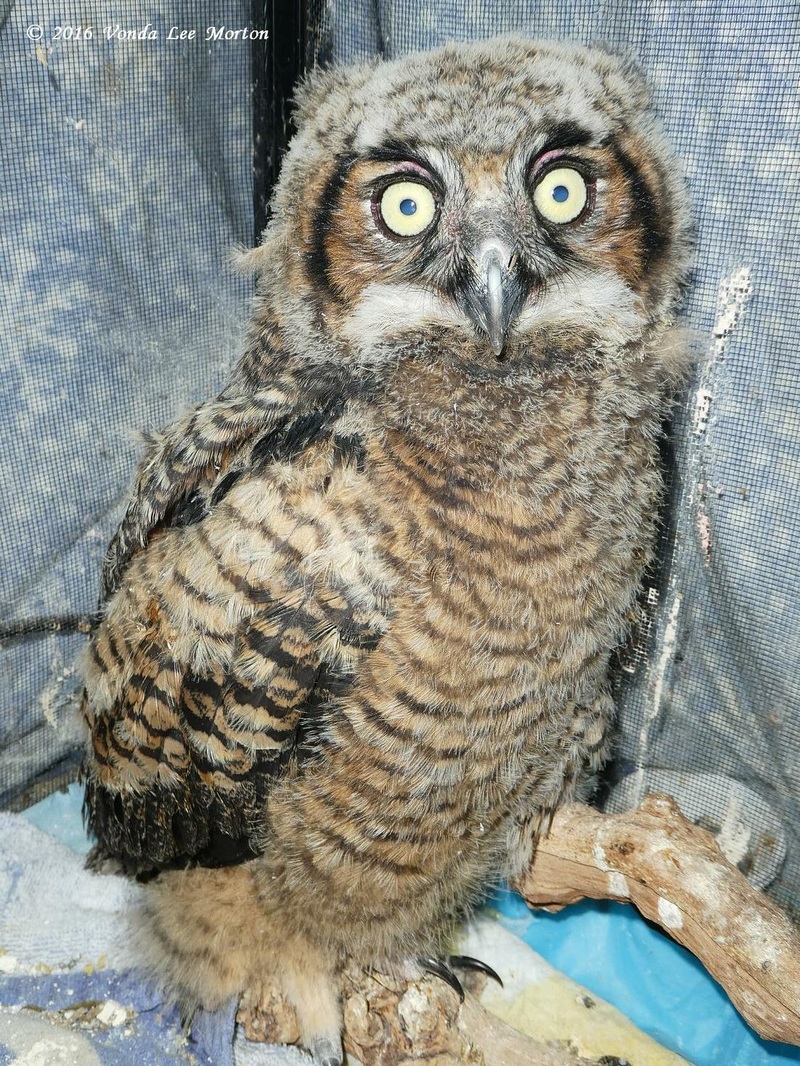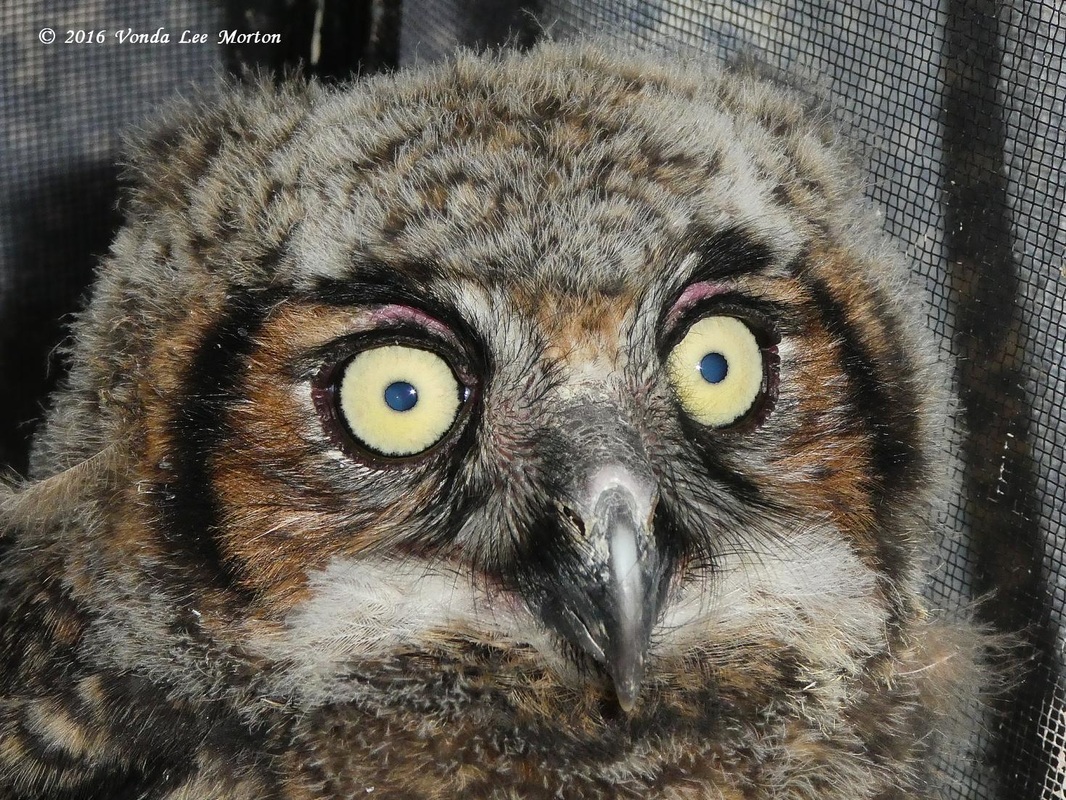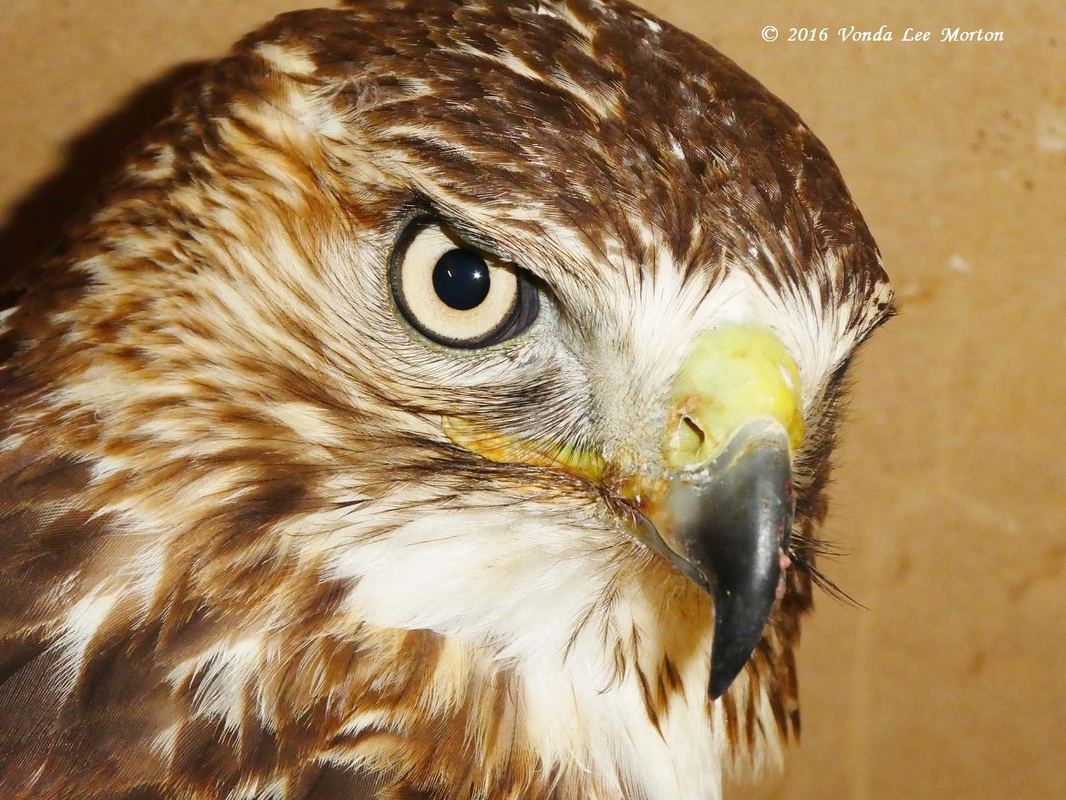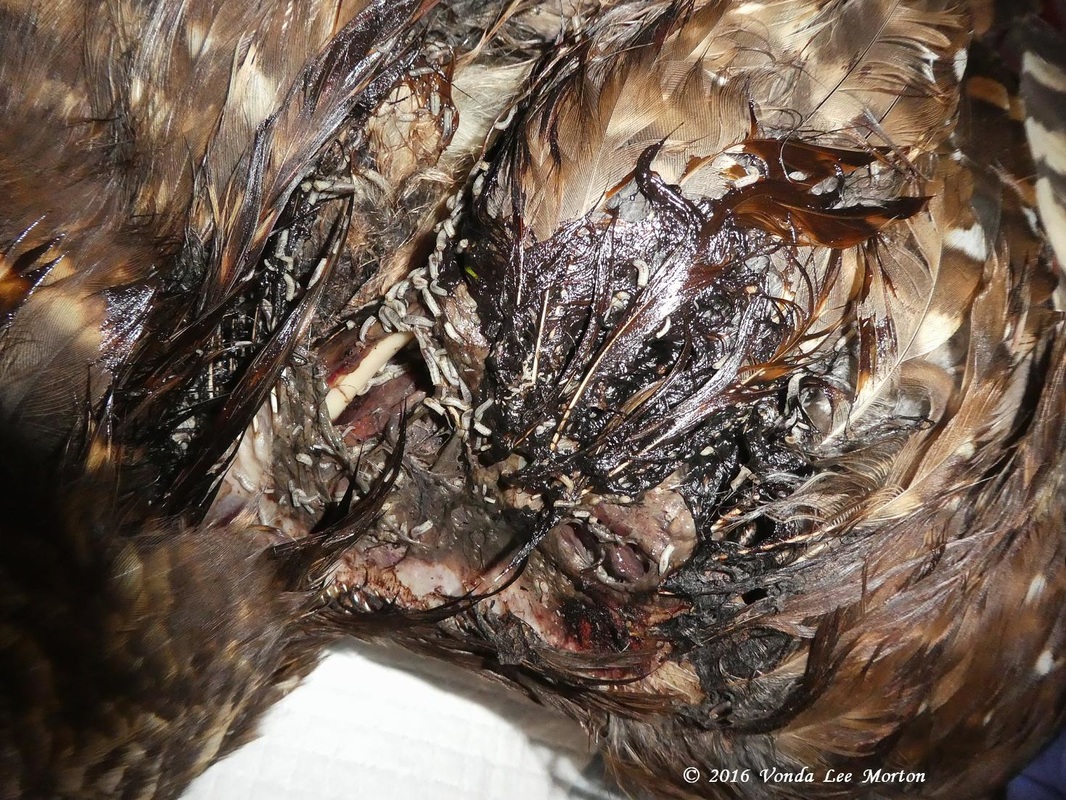Nests are popping up everywhere, though, so baby season will kick in shortly. How can you help the nesting parents and their soon-to-hatch babies?
First and foremost, don’t trim trees or shrubs without checking first for nests! Also, remember: no pesticides or insecticides on your grass, flowers, shrubs or trees. These chemicals not only kill the insects songbirds rely on for food; they also kill the birds themselves—both adults and nestlings.
Fresh hay scattered around your yard provides excellent nesting material. Please don’t attempt to “recycle” your dryer lint as nesting material; it’s not a good idea for wild birds. Also human or pet hair is a bad idea, for a variety of reasons. Humans tend to use all sorts of chemicals on their hair, never good for birds, and flea treatments on pets can also adversely affect birds. In addition, both types of hair pose a very real threat of tangling around nestlings’ feet or legs with potentially deadly results. So hay is your best option for nesting material.
If you don’t have nest boxes up for cavity nesters already, it’s not too late. Unlike raptors, who usually raise only one clutch a year (unless the first nest is destroyed or the babies die), songbirds usually raise three to four clutches a year, so while you may have missed out on the first clutch, there’s time to get up nest boxes for the subsequent clutches this season.
Once again—and I can’t stress this enough—keep your cats indoors, for the welfare of both the birds and the cats.
Make sure there’s fresh water in shallow dishes in several places throughout your yard, and if you’re so inclined, you can even purchase mealworms, wax worms and other birdie delights to place in feeders in your yard or simply scatter on the ground. The extra food will aid the parents in feeding their young. Do this sparingly, however, as these bird delicacies also attract ants if too many are scattered and the birds don’t eat them fairly quickly. I’d recommend a few early in the morning and late in the evening, to aid with the first morning and last evening feedings.
Learn to determine quickly if a grounded bird needs human intervention. If the unnested baby is featherless, either with eyes closed or eyes open, it needs IMMEDIATE assistance. If you cannot find the nest or can’t reach it, place the baby on low heat and CALL YOUR LOCAL BIRD REHABBER without further delay.
If the baby bird has some feathers coming in and its eyes are open, again, look for the nest. If you can’t reach it, try making a makeshift nest from an old margarine tub or other small container. Punch a few SMALL holes in the bottom so it doesn’t collect water, line it with hay, and nail it to a tree as high as you can. Place the baby bird in the makeshift nest and leave the area for about 30 minutes. When you return to check on the baby, if it’s sleeping quietly and/or has pooped in the “nest”, this is a good sign the parents are visiting and feeding; if not, CALL YOUR LOCAL BIRD REHABBER. CAVEAT: Do NOT use this method if you or your neighbors have free-roaming cats. It’s just an invitation for the cats to maul the babies.
If the bird is fully feathered and has short tail feathers, it’s actually a fledgling and while its flight may be short and clumsy, it IS out of the nest but still being fed by its parents. Don’t be a birdnapper! As long as the fledgling isn’t in danger from predators, watch from a safe distance and see if the parents are coming down to feed it. Fledglings aren’t fed as often, so you might have to wait 45 minutes to an hour before seeing a parent swoop in with food. If, after 45 minutes to an hour, you haven’t seen a parent with a food delivery, CALL YOUR LOCAL BIRD REHABBER.
And, of course, all bets are off if the baby is injured or seems weak or lethargic. In these instances, CALL YOUR LOCAL BIRD REHABBER immediately.
On to the past week’s recap:
The great horned owl nestling is about ready for the flight pen. He’s started test-flapping his wings a bit, so after the slight cold snap we’re supposed to be having over the next couple of days, we’ll see how he does in the flight pen.
Owls have staggered nesting seasons, which I’ve always found interesting. Generally speaking, great horneds nest in January and February; barreds nest from March through August; screeches nest from about mid-March through mid-May; barn owls can nest year-round, dependent on food supply. Neat little tidbit, huh?




 RSS Feed
RSS Feed
